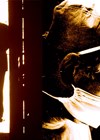In-office awake rhinology transforms sinonasal care, offering safe, cost-effective, minimally invasive procedures with rapid recovery and high patient satisfaction.
In recent years, the landscape of otolaryngological surgery has undergone a remarkable transformation with the advent of in-office awake surgical procedures. This innovative approach represents a shift in how we deliver surgical care, offering patients a less invasive alternative to traditional operating room procedures while maintaining excellent clinical outcomes.
A comprehensive range of ENT procedures was recently developed under local anaesthesia in our office setting, focusing primarily on sinonasal surgery and interventional laryngology.
Critical to the success of our in-office surgical programme is careful patient selection. We employ a comprehensive screening protocol that considers medical history, anatomical factors and psychological readiness for awake procedures. Patients with significant septal deviations or high levels of anxiety are not ideal candidates for such procedures.

A virtual reality headset is utilised for relaxation prior to surgery.

Awake surgery requires a dedicated room equipped with video endoscopic equipment and sterile surgical instruments.

Polypectomy under local anaesthesia using a 2.9mm thin blade microdebrider.

Intranasal injection performed under local anaesthesia.
Our sinonasal surgery programme is a key component of our in-office surgical expertise. We routinely perform procedures ranging from inferior turbinoplasty and nasal biopsies to more complex interventions such as polypectomies and revision sinus surgery. These procedures, traditionally conducted in operating rooms under general anaesthesia, have been successfully adapted for the office setting. To ensure the highest standards of patient safety, our facility belongs to a tertiary referral hospital and is equipped with full monitoring capabilities and emergency protocols.
The success of office-based procedures lies in efficient patient preparation, usually combining topical anaesthetics with relaxation techniques. Among these, virtual reality headset-assisted relaxation provides an immersive calming experience, further reducing patient stress. Additionally, targeted nerve block can also be performed if necessary [1].
"We routinely perform procedures ranging from inferior turbinoplasty and nasal biopsies to more complex interventions such as polypectomies and revision sinus surgery"
To date, nasal polypectomy is the most valuable procedure in awake rhinology. This well-tolerated procedure provides rapid relief to patients with chronic rhinosinusitis with nasal polyps. Polypectomy under local anaesthesia is a solid alternative to repeated ethmoidectomies that were sometimes done before. It’s also a good first choice for patients who can’t have general anaesthesia or who mainly complain about nasal blockage from polyps. Utilising a microdebrider with a thin blade (Medtronic® 2.9 mm blade, Dublin, Ireland), the polyps can be safely removed. Since polyps lack nerve fibres, this procedure is generally well tolerated. Bleeding control is a key aspect of this procedure, especially under local anaesthesia. We perform nasal packing with a vasoconstrictor (naphazoline) combined with 5% xylocaine for 20 minutes prior to the surgery to limit bleeding.
In most cases, small amounts of bleeding can easily be suctioned by the microdebrider. In addition, posterior nasal packing can be used to prevent inhalation in the event of significant intraoperative bleeding. This minimally invasive approach allows for real-time assessment and promotes rapid recovery. Studies have demonstrated that such procedures are safe and effective, with significant improvements in nasal obstruction observed postoperatively. Additionally, patient-reported experience measures indicate high satisfaction rates, with many patients preferring local anaesthesia over general anaesthesia for polypectomy. The average duration of symptom relief post-procedure extends beyond two years, underscoring the long-term efficacy of this approach [2].
Inferior turbinoplasty procedures must be executed with particular attention to mucosal preservation [3]. First, a local anaesthesia is administered using xylocaine 5% tampons. Then, a 10W non-contact diode laser is used for precise tissue remodelling, achieving optimal nasal airflow without compromising the physiological function of the turbinates. A key point is to limit the power delivered to the turbinate to the absolute minimum to avoid complications such as turbinate necrosis or persistent nasal crusting.
"Virtual reality headset-assisted relaxation provides an immersive calming experience, further reducing patient stress"
Biopsies of the nasal mucosa and small tumours of the nasal cavity can also be safely performed in an office-based setting. However, this approach is reserved for lesions that are not highly vascularised, as the risk of intraoperative inhalation from the bleeding must remain low to ensure safety. Careful preoperative assessment, including imaging with contrast injection, helps determine the suitability of in-office biopsy and optimises patient selection for this minimally invasive technique.
Certain cases of revision sinus surgery can be performed under awake conditions. Balloon dilation techniques have been successfully used as a minimally invasive option for select patients. This approach is particularly suitable when a prior uncinectomy or sinusotomy has already been performed [4]. All types of revision sinusotomy can be considered. Middle meatal antrostomy allows for careful widening of the maxillary sinus drainage pathway, followed by irrigation and suctioning. Similarly, revision sphenoidotomy offers an effective solution for persistent sphenoid sinus infections.
Our in-office surgical programme offers numerous advantages, making it an efficient and patient-friendly alternative to traditional operating room procedures. One of the key benefits is enhanced recovery, as patients can typically resume normal activities within hours of the procedure. Additionally, the cost-effectiveness of in-office surgery is well established, primarily due to the absence of general anaesthesia and shorter intervention times [5]. At our centre, we demonstrated a 45% cost reduction for in-office polypectomy compared to the same procedure under general anaesthesia [2]. Another major advantage is the elimination of anaesthesia-related risks, providing a safer option for many patients. The ability to interact with patients in real time also allows for immediate feedback, ensuring optimal surgical outcomes. Furthermore, improved accessibility through shorter waiting times and simplified scheduling makes these procedures more convenient for both patients and providers. And finally, in-office procedures do not require the presence of an anaesthesiologist, offering a practical solution, given the current challenges in anaesthesia availability.
One of the primary limitations of in-office surgery is pain management, particularly in procedures involving bone resection or drilling. While many soft tissue interventions can be comfortably performed under local anaesthesia, the manipulation of bony structures remains a significant challenge in awake surgery. Patients may experience discomfort despite the use of local anaesthetics, highlighting the need for further advancements in pain control strategies. To expand the scope of in-office procedures, improvements in anaesthetic protocols are essential. Regional nerve blocks, such as the V2 (maxillary nerve) block, infraorbital nerve block, or greater palatine nerve block, have been shown to provide effective analgesia for certain nasal and sinus procedures [1]. Integrating these techniques into standard protocols could significantly enhance patient comfort.
The use of long-acting local anaesthetics, such as bupivacaine or ropivacaine, may also help prolong pain relief during and after the procedure. Beyond pharmacologic solutions, adjunctive strategies can further improve patient tolerance. Hypnosis and guided relaxation techniques are gaining interest as non-invasive methods to reduce anxiety and perception of pain in awake surgeries. These approaches, when combined with conscious sedation or topical and infiltrative anaesthesia, can create a more comfortable experience for patients undergoing in-office procedures. Further research and clinical experience are needed to refine these techniques and extend the feasibility of in-office surgery for more complex interventions.
Conclusion
In-office awake surgery is a safe, effective, and cost-efficient alternative to traditional ENT procedures. It reduces recovery time, anaesthesia risks, and costs while maintaining high patient satisfaction. Pain management remains a challenge, but advancements in anaesthesia and non-pharmacologic techniques will help expand its use in outpatient care.
References
1. Watts E, Thompson A, Pankhania M, et al. Local anaesthetic techniques in endoscopic sinonasal surgery: a contemporaneous review. J Laryngol Otol 2022;136(8):683–91.
2. Mimari C, Radulesco T, Penicaud M, et al. Surgical management of chronic rhinosinusitis with nasal polyps under local anaesthesia: Indications and results. Acta Otorhinolaryngol Ital 2023;43(1):42.
3. Cakli H, Cingi C, Güven E, et al. Diode laser treatment of hypertrophic inferior turbinates and evaluation of the results with acoustic rhinometry. Eur Arch Otorhinolaryngol 2012;269(12):2511–7.
4. Bikhazi N, Light J, Truitt T, et al. Standalone Balloon Dilation versus Sinus Surgery for Chronic Rhinosinusitis: A Prospective, Multicenter, Randomized, Controlled Trial with 1-year Follow-up. Am J Rhinol Allergy 2014;28(4):323–9.
5. Kumar S, Thavorn K, Katwyk S van, et al. Cost-effectiveness of Endoscopic Polypectomy in Clinic compared to Endoscopic Sinus Surgery: A modelling study. Clin Otolaryngol 2020;45(4):477–85.
Declaration of competing interests: None declared.










